Jack McClelland and McClelland & Stewart
Judy Donnelly, McMaster University
 John Gordon (Jack) McClelland was born in Toronto in 1922, the youngest child of John and Ethel McClelland. By the time of his birth, the name “McClelland” was already a mainstay of Canadian publishing. John McClelland Sr. had started his career with the Methodist Book and Publishing House as a young teenager. After rising through the ranks of that company, he and colleague Frederick G. Goodchild launched their own firm, McClelland & Goodchild, in 1906, initially as a library supply house. By 1909 they published their first book, Random Reminiscences of Men and Events, by John D. Rockefeller, in collaboration with the Doubleday Page in New York. They were joined by Bible salesman George Stewart in 1913, and the moniker
John Gordon (Jack) McClelland was born in Toronto in 1922, the youngest child of John and Ethel McClelland. By the time of his birth, the name “McClelland” was already a mainstay of Canadian publishing. John McClelland Sr. had started his career with the Methodist Book and Publishing House as a young teenager. After rising through the ranks of that company, he and colleague Frederick G. Goodchild launched their own firm, McClelland & Goodchild, in 1906, initially as a library supply house. By 1909 they published their first book, Random Reminiscences of Men and Events, by John D. Rockefeller, in collaboration with the Doubleday Page in New York. They were joined by Bible salesman George Stewart in 1913, and the moniker  “McClelland, Goodchild & Stewart” (MG&S) lasted until 1918 when Goodchild was forced to leave the company for personal reasons. By 1916 MG&S had become significant force in the Canadian publishing industry: that year, author L.M. Montgomery, dissatisfied with her American publishers, was happy to issue her book of poetry, The Watchman and Other Poems with MG&S.
“McClelland, Goodchild & Stewart” (MG&S) lasted until 1918 when Goodchild was forced to leave the company for personal reasons. By 1916 MG&S had become significant force in the Canadian publishing industry: that year, author L.M. Montgomery, dissatisfied with her American publishers, was happy to issue her book of poetry, The Watchman and Other Poems with MG&S.
The firm had forged strong partnerships with foreign publishers, including the British houses Constable and Co.; J.M. Dent and Sons; and Cassell and Co.; and U.S. firms Doubleday Page; Little, Brown and Co; and Dodd, Mead. But, as demonstrated by their publication of the Montgomery title, M&S in its various  early incarnations also fostered Canadian authors, including Bliss Carman, Ralph Connor, Hiram Cody, and Martha Ostenso, and as early as 1912 issued a Canadiana catalogue. By 1922, the library in baby Jack McClelland’s family home could easily have been filled by the more than 600 titles published by the senior McClelland’s firm, covering such topics as religion, history, the First World War, fiction, poetry, children’s works, and household guides.
early incarnations also fostered Canadian authors, including Bliss Carman, Ralph Connor, Hiram Cody, and Martha Ostenso, and as early as 1912 issued a Canadiana catalogue. By 1922, the library in baby Jack McClelland’s family home could easily have been filled by the more than 600 titles published by the senior McClelland’s firm, covering such topics as religion, history, the First World War, fiction, poetry, children’s works, and household guides.
That family library played a key role in Jack McClelland’s life: his exposure to books was greatly increased as a result of a health condition – asthma – which limited his ability to attend school, which in turn prompted his mother to move his bedroom into the library. Devouring the classics and non-fiction along with favourite children’s titles, Jack McClelland’s intensive, early reading could not 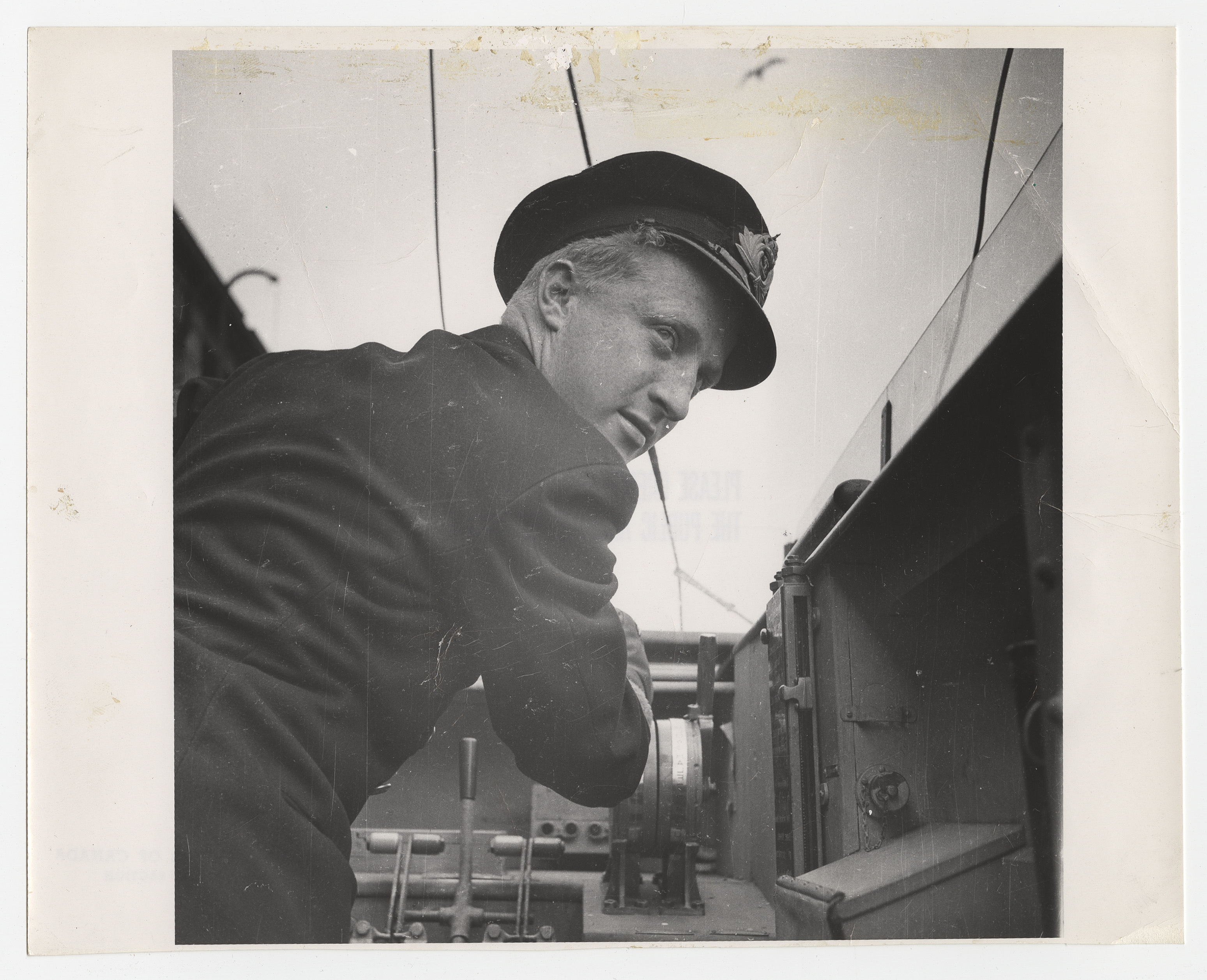 have better prepared him for his future career.
have better prepared him for his future career.
After attending University of Toronto School and St. Andrew’s College, where he achieved good grades and excelled at hockey, Jack McClelland enrolled in science and engineering at the University of Toronto. In 1941, at the age of nineteen, he enlisted in the navy, looking for adventure. By the end of 1942 he was the executive officer on a mine sweeper operating outside of St. John’s, Newfoundland, and in 1944 volunteered for overseas service in the Motor Torpedo Boat service. Like many men of his generation, McClelland would later 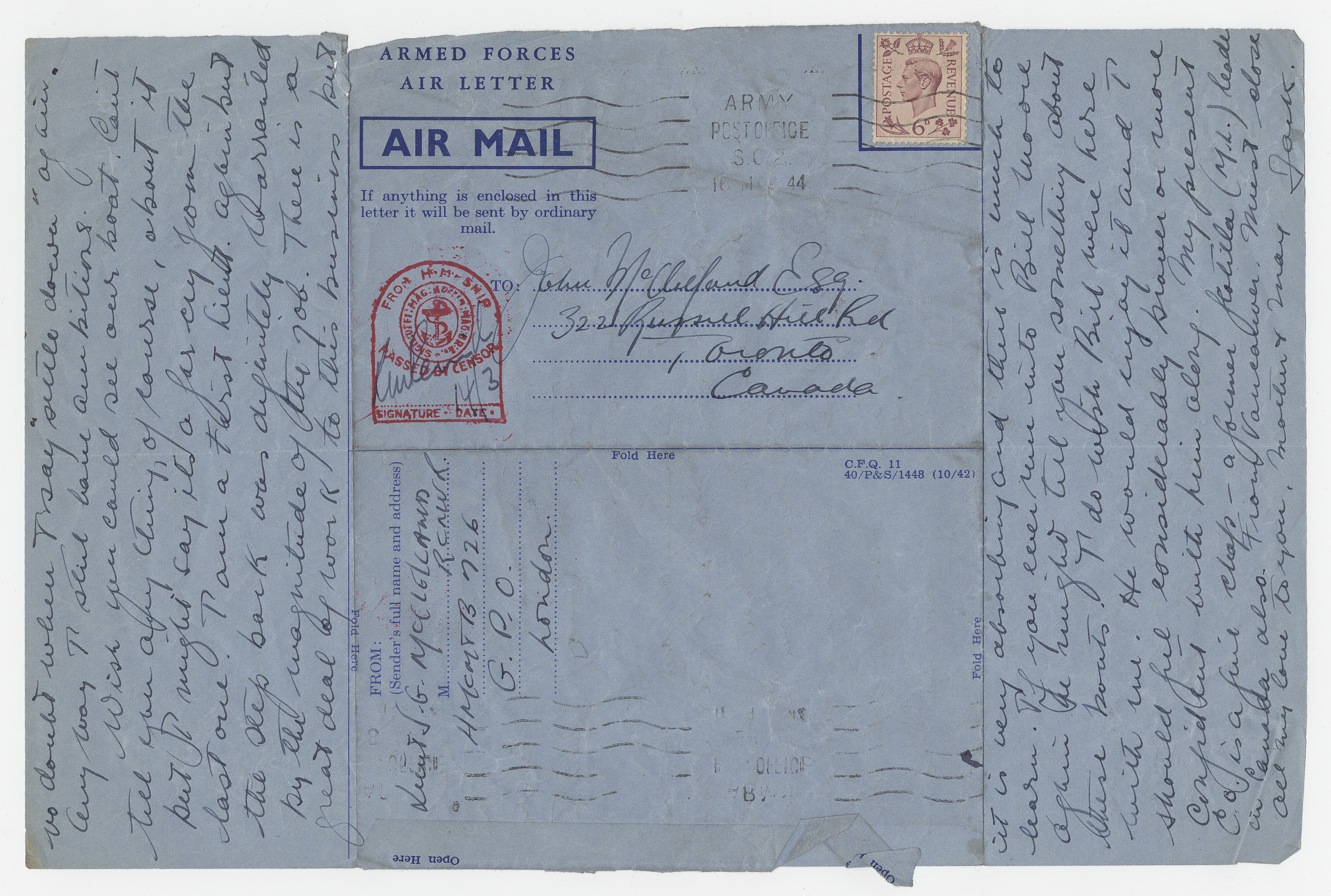 describe the war as “the best period” of his life, noting that he “lived every day as if it was the last.” His wartime letters reveal dedication and trepidation, along with great respect and affection for his parents.
describe the war as “the best period” of his life, noting that he “lived every day as if it was the last.” His wartime letters reveal dedication and trepidation, along with great respect and affection for his parents.
Returning from overseas in July 1945, McClelland married Elizabeth Matchett late that year. He finished his degree at University of Toronto and entered the family business in November 1946, a year after the dissolution of an agreement at McClelland & Stewart that forbade any senior partner’s child to take charge 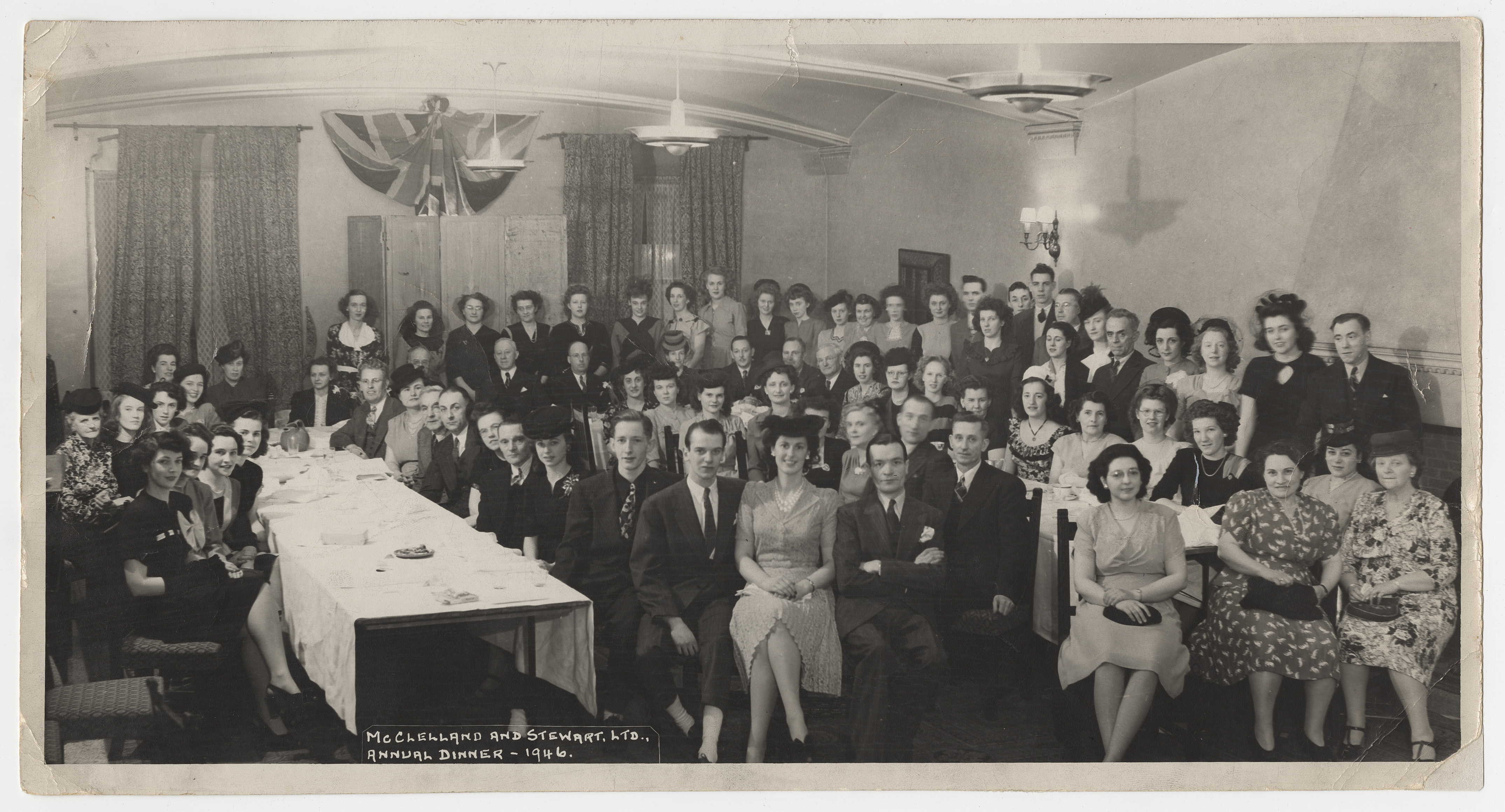 of the firm.
of the firm.
By that year, M&S had weathered numerous challenges, including unexpected problems caused by an expansion of the business, beginning in 1929, and low sales during the Depression and the Second World War. In 1946 McClelland & Stewart unveiled a colophon to lend a fresh look to their publications. The idea for the design of a man (thought to represent Apollo) holding a bow and arrow, standing in a chariot, originated with lines from William Blake’s poem, Milton: “Bring me my Bow of burning gold: Bring me my Arrows of desire: Bring me  my Spear: O clouds unfold! Bring me my Chariot of Fire!” A version of the original colophon is still used by M&S on their books and website.
my Spear: O clouds unfold! Bring me my Chariot of Fire!” A version of the original colophon is still used by M&S on their books and website.
Within six months of joining the firm, young McClelland had spent time working in all of the company’s divisions, from the order department to the editorial offices. While the company had rallied and was in a relatively strong position by then, it faced a significant challenge in 1947 when one of its largest U.S. partners, Doubleday, opened its own offices in Canada, causing M&S to lose, as James King notes, “half of its sales and more than half of its income.” This blow for M&S was a turning point for Jack McClelland, as he realized the precariousness of the firm’s reliance on foreign agencies, and began to understand that the company had to become more independent, and even more Canadian in its focus. 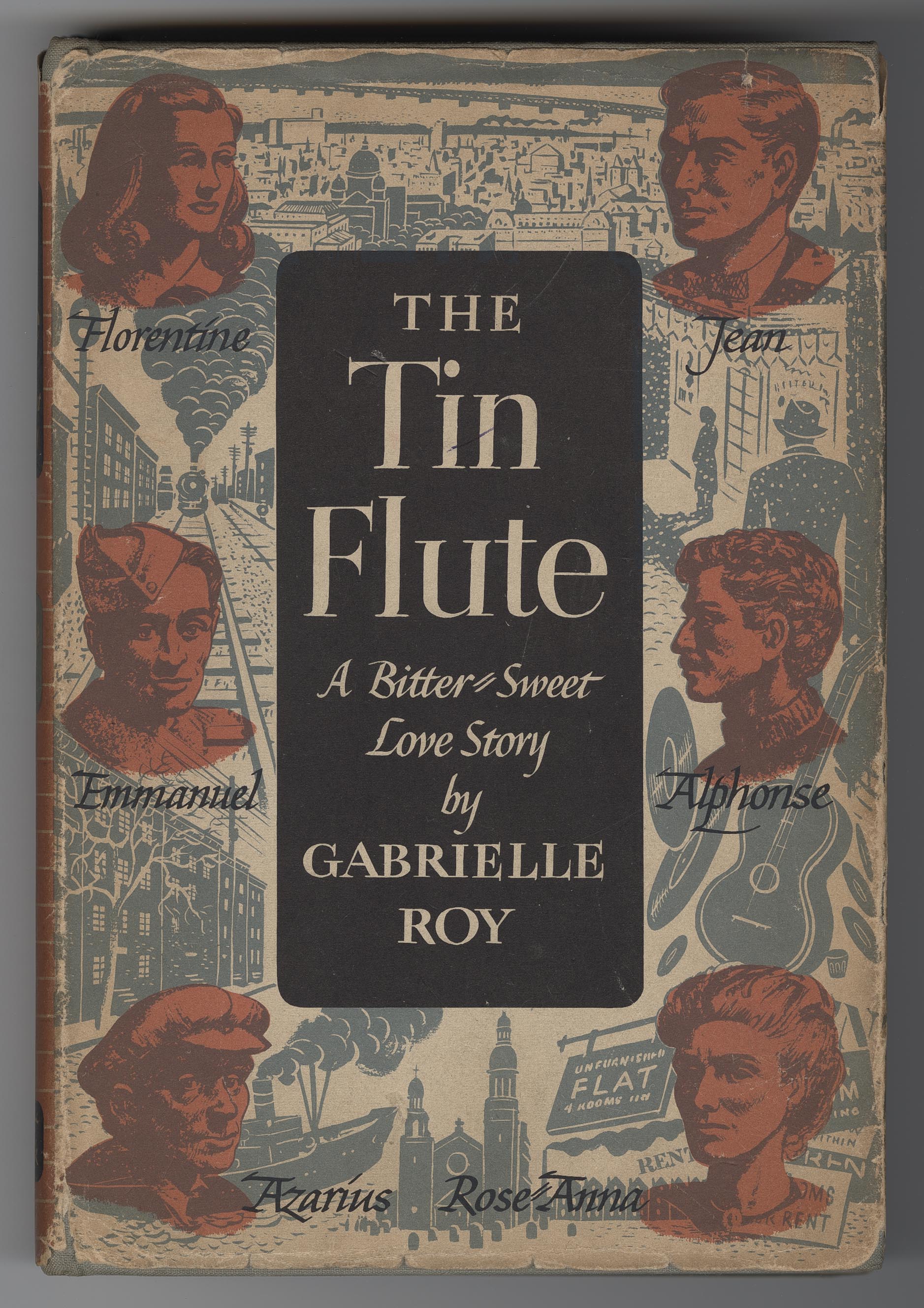
That same year, John McClelland sent his son and daughter-in-law on a cross-country tour, which served both as a belated honeymoon trip for the couple, and an opportunity for the younger McClelland to show his skills as a salesman, meeting authors and people in the book trade along the way. M&S had co-published with Reynal & Hitchcock (New York) Gabrielle Roy’s The Tin Flute, and Jack McClelland’s encounter with her during the Manitoba leg of the tour resulted in a strong, mutual respect between author and publisher. Adverse to public appearances, she would remain one of the few authors whom he would not pressure to undertake book tours.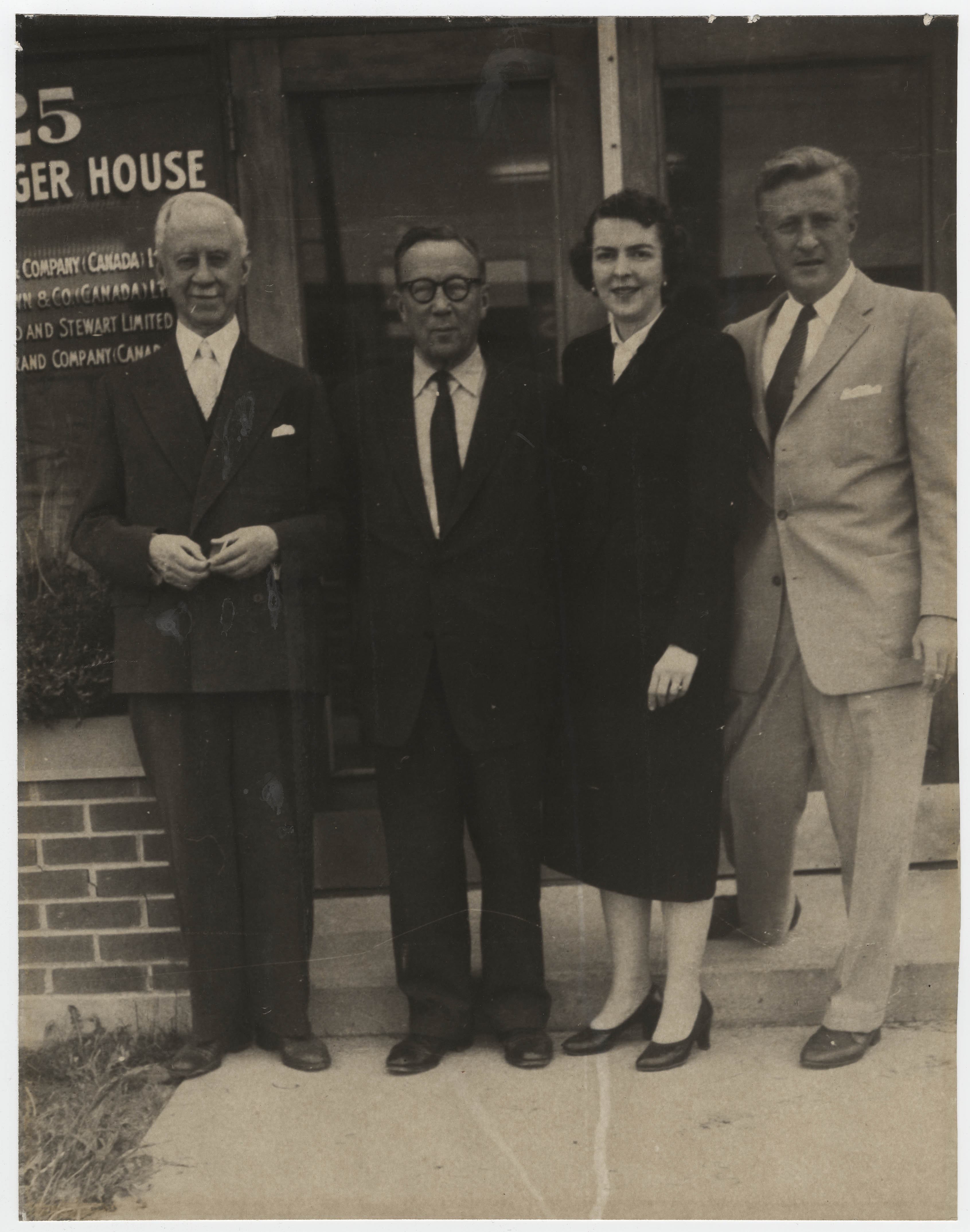
Jack McClelland rose through the company and became general manager and executive vice-president in 1952. That year M&S also moved from their central Toronto location to new facilities in East York. Two years later, McClelland would publish The Royal Family by Pierre Berton, who would become one of the firm’s most successful authors, as well as a close, life-long friend. McClelland would enjoy similar success and friendship with Farley Mowat, whose first M&S book, The Regiment, was published in 1955.
To further the cause of Canadian authorship and literature, McClelland was keen to act on an idea 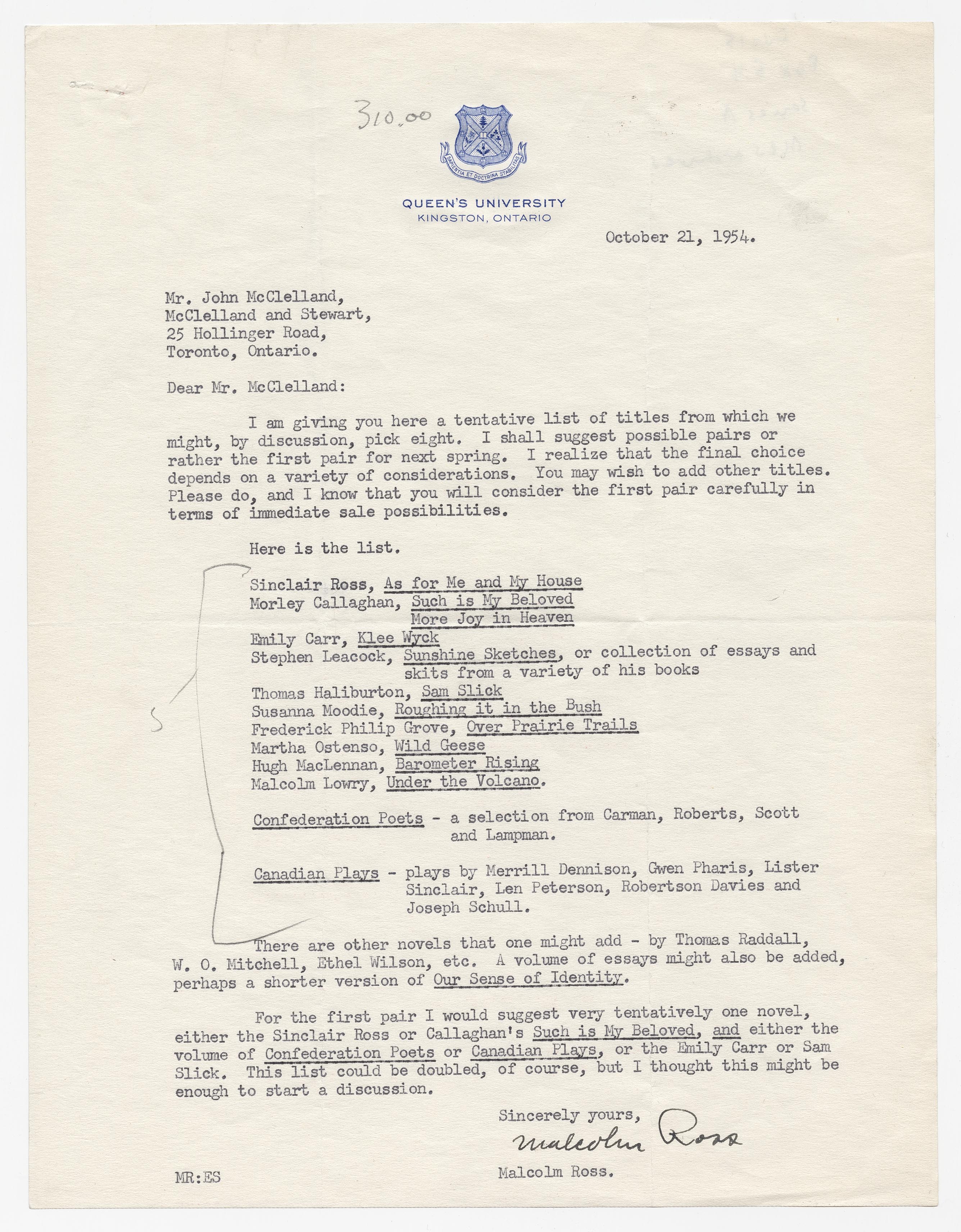 of one of his former university professors, Malcolm Ross, who in 1952 suggested a line of inexpensive Canadian paperbacks to bolster the teaching of Canadian literature. By 1958, with some trepidation but with great conviction, McClelland & Stewart launched the New Canadian Library Series, which would become the touchstone of Canadian literature students for generations to come.
of one of his former university professors, Malcolm Ross, who in 1952 suggested a line of inexpensive Canadian paperbacks to bolster the teaching of Canadian literature. By 1958, with some trepidation but with great conviction, McClelland & Stewart launched the New Canadian Library Series, which would become the touchstone of Canadian literature students for generations to come.
McClelland continued to push the Canadian publishing envelope, honing his own abilities to recognize a significant manuscript when it crossed his desk. While he sometimes missed opportunities – turning down Sheila Burnford’s The Incredible Journey, which later sold 23,000,000 copies – his instincts paid off with potentially risky titles such as Sheila Watson’s 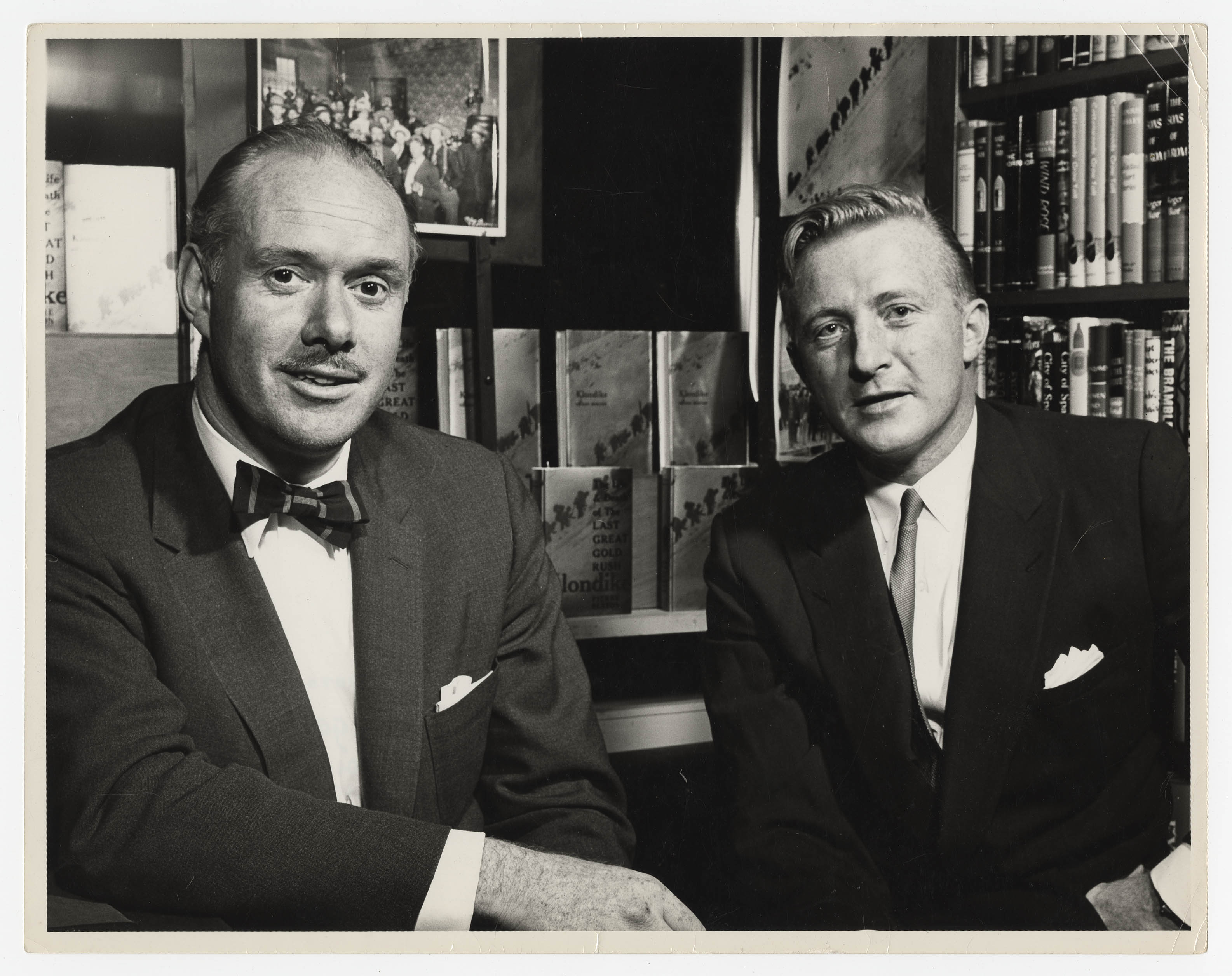 experimental novel, The Double Hook (1959), Leonard Cohen’s poetry collection, The Spice-Box of Earth (1961), and Pierre Berton’s children’s book, The Secret World of Og (1961). In the latter two instances, strong, personal faith in the authors correctly led him to override concerns from colleagues at M&S.
experimental novel, The Double Hook (1959), Leonard Cohen’s poetry collection, The Spice-Box of Earth (1961), and Pierre Berton’s children’s book, The Secret World of Og (1961). In the latter two instances, strong, personal faith in the authors correctly led him to override concerns from colleagues at M&S.
By 1963, M&S was in dire financial straits. Along with many successes, the company had made what McClelland termed numerous “bad publishing decisions”: over $87,000 was lost in the first six months, and expenses were rapidly eroding gross profits. McClelland and the firm’s executive vice-president, Hugh Kane, who had joined M&S in 1937, made a major decision: they severed distribution ties with foreign publishers whose lines they deemed unprofitable. Their commitment to Canadian titles continued, however, with the publication of books by Margaret Laurence and Mordecai Richler, and the launch of the Carleton Library Series and the Canadian Centenary Series. Again, these two authors would become close friends with McClelland, strengthening his oft-quoted mantra: “I publish authors, not books.”
 Subsequent years in the 1960s were strong for the company as their top authors buoyed sales, and McClelland, again using a combination of experience and instinct, assembled one of the finest teams of editors and salesmen in the country and the firm embarked on a period of increased publishing and new ventures. John McClelland’s death in 1968 marked the end of an era in Canadian publishing. George Stewart had passed away in 1955 and the two men represented an age of formality, even “Victorian elegance,” as Carl Spadoni notes. The younger McClelland threw lavish and
Subsequent years in the 1960s were strong for the company as their top authors buoyed sales, and McClelland, again using a combination of experience and instinct, assembled one of the finest teams of editors and salesmen in the country and the firm embarked on a period of increased publishing and new ventures. John McClelland’s death in 1968 marked the end of an era in Canadian publishing. George Stewart had passed away in 1955 and the two men represented an age of formality, even “Victorian elegance,” as Carl Spadoni notes. The younger McClelland threw lavish and  liquor-fuelled book launches, in line with the more relaxed sensibilities of the 1960s and subsequent decades, and sent his authors out on extensive book tours, promoting new works with innovative publicity stunts that put him, the books, and M&S, in the forefront of Canadian publishing.
liquor-fuelled book launches, in line with the more relaxed sensibilities of the 1960s and subsequent decades, and sent his authors out on extensive book tours, promoting new works with innovative publicity stunts that put him, the books, and M&S, in the forefront of Canadian publishing.
But M&S was unfortunately about to launch into one of its most trying financial periods. Encouraged by the success of the previous decade, McClelland sought outside investors to finance an expansion of the company in the late 1960s. The deal collapsed when McClelland, wishing to retain his authority at M&S, refused to make changes requested by the backers (Cemp Investments Ltd. and the McConnell family). Expansion costs were covered but M&S was financially unstable - indeed in “informal receivership” - for several years.
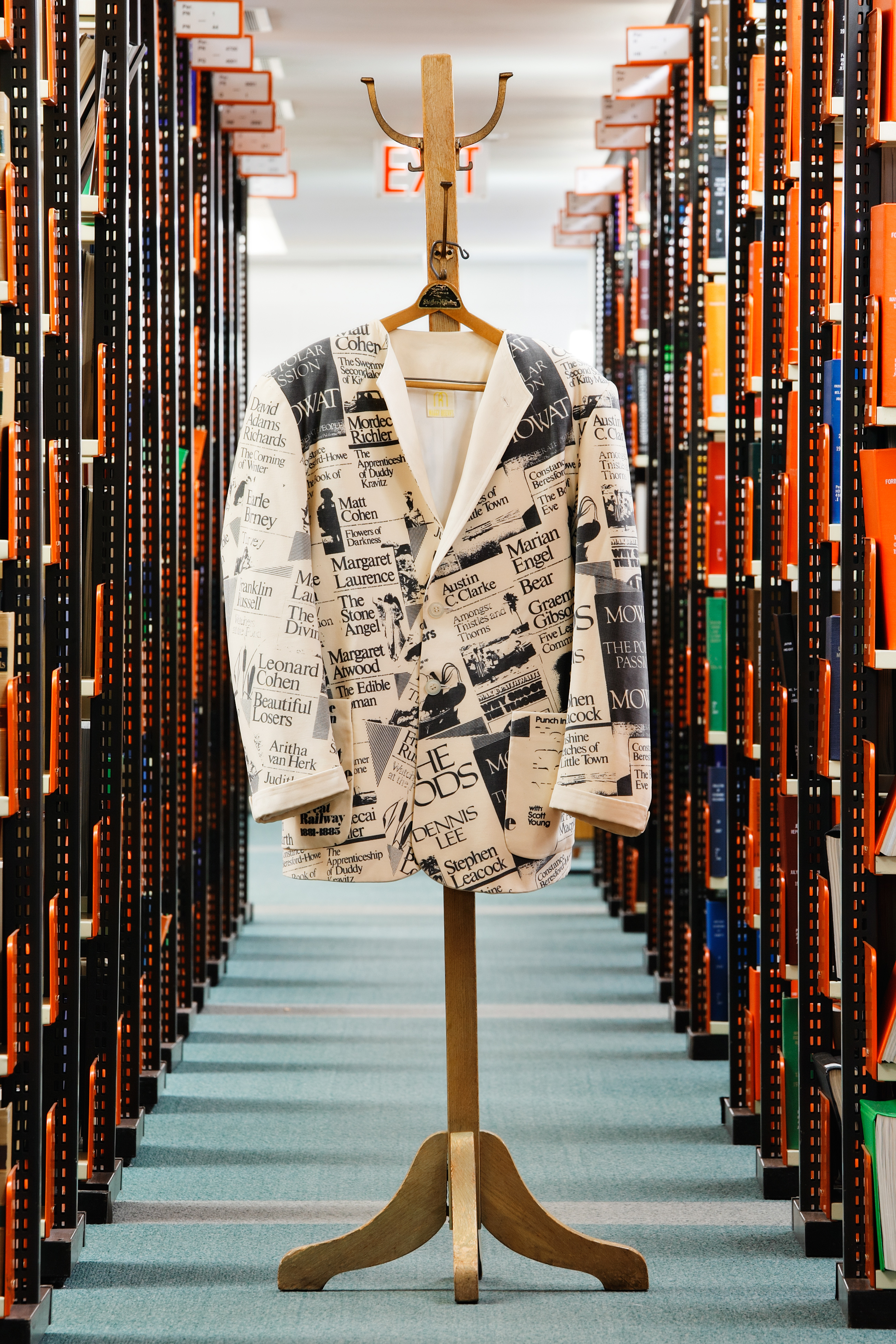 By 1971, however, the firm was still heavily in debt and McClelland was forced to put M&S on the sale block. Extensive media coverage ensued, with some journalists declaring the situation to be a national catastrophe. Fearful that the firm would fall into the hands of a U.S. company (a fate that had befallen Ryerson Press and Gage Publishing), the Ontario government via its Ontario Development Corporation (ODC) lent M&S nearly $1 million in return for debentures amounting to one-third of the company’s assets. Pierre Berton’s runaway success with The Last Spike, and increased sales of New Canadian Library titles further settled the rough waters, at least for a time.
By 1971, however, the firm was still heavily in debt and McClelland was forced to put M&S on the sale block. Extensive media coverage ensued, with some journalists declaring the situation to be a national catastrophe. Fearful that the firm would fall into the hands of a U.S. company (a fate that had befallen Ryerson Press and Gage Publishing), the Ontario government via its Ontario Development Corporation (ODC) lent M&S nearly $1 million in return for debentures amounting to one-third of the company’s assets. Pierre Berton’s runaway success with The Last Spike, and increased sales of New Canadian Library titles further settled the rough waters, at least for a time.
Years of financial uncertainty, long hours reading manuscripts and writing copious letters late into the night, and managing what Spadoni has called “the country’s literary flagship” began to take their toll on Jack McClelland, and for a period from 1975 to mid-1976, he again considered  selling M&S. To the delight of his loyal authors and many Canadians, he revoked this decision, and continued to dive into the publishing fray. One of his last, greatest ventures, was a co-publishing deal with the U.S. firm, Bantam Books Inc., which resulted in a new imprint: Seal Books. Launched with a “best first new novel” competition, won by Aritha van Herk for Judith, Seal Books, then under the leadership of long-time M&S executive, Anna Porter, was successful, and after merging with Random House Canada, continues to this day.
selling M&S. To the delight of his loyal authors and many Canadians, he revoked this decision, and continued to dive into the publishing fray. One of his last, greatest ventures, was a co-publishing deal with the U.S. firm, Bantam Books Inc., which resulted in a new imprint: Seal Books. Launched with a “best first new novel” competition, won by Aritha van Herk for Judith, Seal Books, then under the leadership of long-time M&S executive, Anna Porter, was successful, and after merging with Random House Canada, continues to this day.
Jack McClelland was president and publisher of M&S until 1982, when he appointed Linda McKnight, who had been with the company since 1969, to head the company. He remained chairman of the firm. He continued to be  actively engaged, organizing a massive book sale in Toronto in 1983 to sell off one-third of the company’s inventory (which naturally incurred the wrath of many booksellers). Controversy was never far from Jack McClelland.
actively engaged, organizing a massive book sale in Toronto in 1983 to sell off one-third of the company’s inventory (which naturally incurred the wrath of many booksellers). Controversy was never far from Jack McClelland.
The financial pendulum continued to swing for M&S. By September 1984, the company was $5 million dollars in debt and was paying huge interest charges. Jack McClelland valiantly raised funds from private investors, including many M&S authors, which encouraged the ODC to provide significant financial support and another rescue of the venerable publisher. But within a year, the company suffered turmoil in its executive ranks, including McKnight’s resignation. An exhausted McClelland finally sold the company in December 1985 to Toronto entrepreneur, Avie Bennett. Although McClelland had agreed to stay on in the capacity of “publisher”, major decisions were now out of his 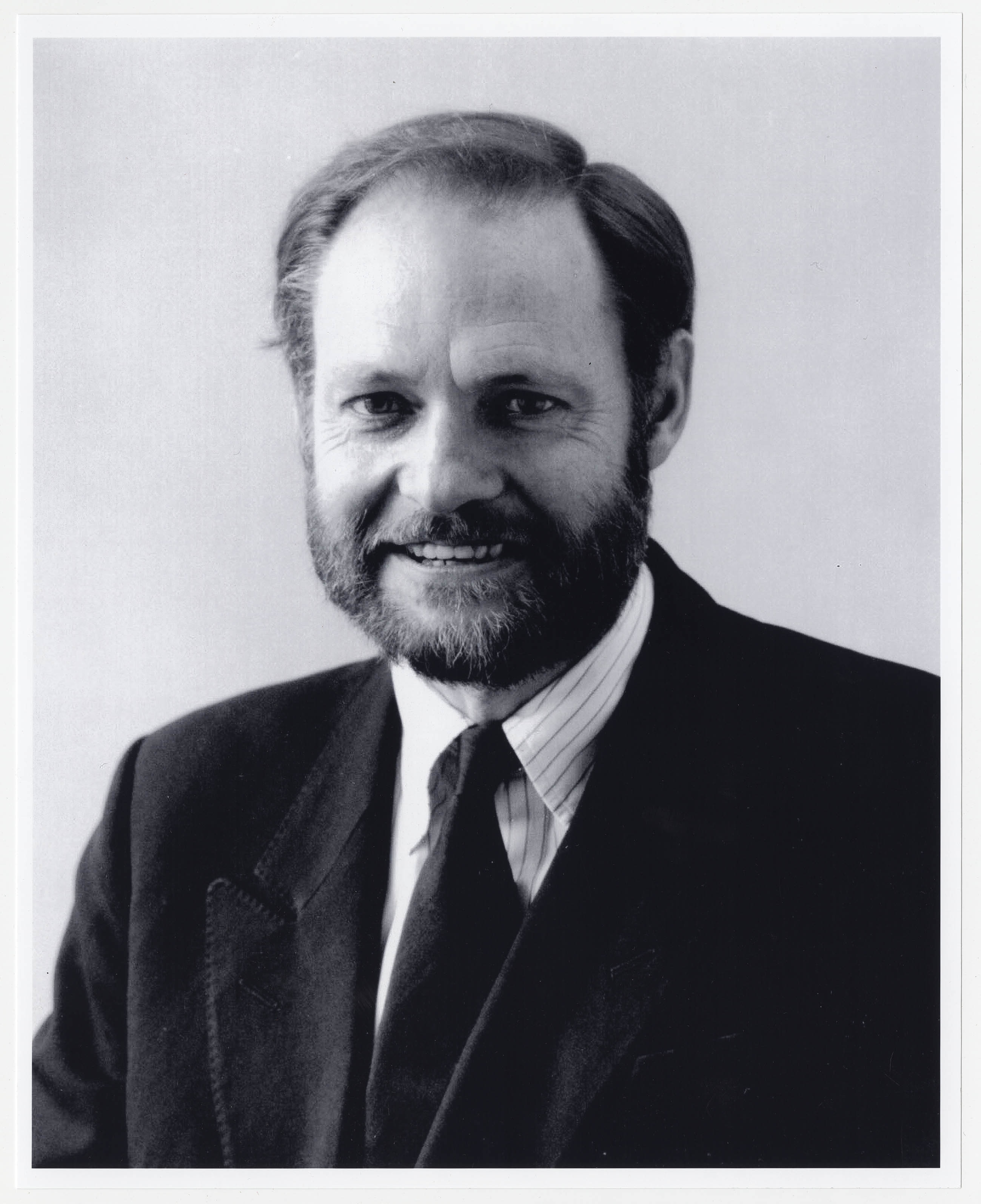 hands, and he decided to leave the firm permanently in March 1987.
hands, and he decided to leave the firm permanently in March 1987.
McClelland & Stewart remains one of Canada’s greatest publishing houses. Avie Bennett recruited eminent editor Douglas Gibson in 1986, offering Gibson Canada’s first editorial “boutique” imprint. Douglas Gibson books was launched that year, and Gibson became president and publisher of M&S in 2000. Douglas Pepper assumed the reins of M&S in 2004. The firm has since bought Hurtig Publishers, Tundra, and formed an alliance with Macfarlane Walter & Ross until its demise in 2003. Three years earlier, Avie Bennett, in a stunt worthy of Jack McClelland, gave M&S to the University  of Toronto, which currently owns 75 percent of its shares, the remaining shares belonging to Random House.
of Toronto, which currently owns 75 percent of its shares, the remaining shares belonging to Random House.
Jack McClelland ran a literary agency from 1989 to 1993. He died in 2004, admired by Canadians from all walks of life, who respected his deep commitment to Canadian publishing and his intense loyalty to his authors and his country. For writer Matt Cohen, McClelland was “a man who gave Canada a unique and priceless gift: a series of visions of itself and the words through which … Canada defined itself as a nation.”
Jack McClelland: The Publisher of Canadian Literature. Guadalajara: Homage Editions, University of Guadalajara, 1996.
King, James. Jack - A Life with Writers: The Story of Jack McClelland. Toronto: Knopf Canada, 1999.
McClelland & Stewart website: http://www.mcclelland.com/
Seal Books website: http://www.randomhouse.ca/about/seal.html
Solecki, Sam, ed. Imagining Canadian Literature: The Selected Letters of Jack McClelland. Toronto: Key Porter Books, 1998.
Spadoni, Carl and Judy Donnelly. A Bibliography of McClelland and Stewart Imprints, 1909-1985: A Publisher’s Legacy. Toronto: ECW Press, 1994.
Spadoni, Carl, curator. "A Centenary Celebration of McClelland & Stewart Ltd." 2006. Online exhibition: http://library.mcmaster.ca/archives/MandS/index.htm
Jack McClelland fonds, McMaster University
McClelland & Stewart Ltd. fonds, McMaster University






![Sinking of the Lusitania [advertising supplement], May 1915](/sites/default/files/styles/thumbnail/public/canpub/CP000006_0.jpg?itok=YHDP9Cay)
![Sinking of the Lusitania [advertising supplement], May 1915](/sites/default/files/styles/thumbnail/public/canpub/CP000006-2_0.jpg?itok=zo9sU_6U)
![The World's Greatest War [advertising supplement], 15 May 1915](/sites/default/files/styles/thumbnail/public/canpub/CP000004_0.jpg?itok=JYzzGX-h)
![The World's Greatest War [advertising supplement], 15 May 1915](/sites/default/files/styles/thumbnail/public/canpub/CP000004-2_0.jpg?itok=9kcwBBj5)





